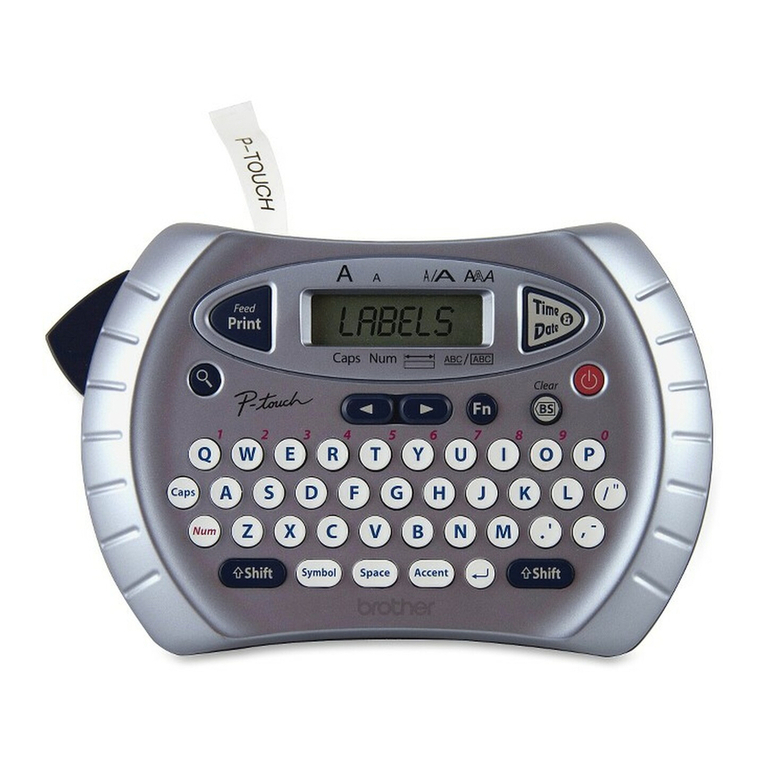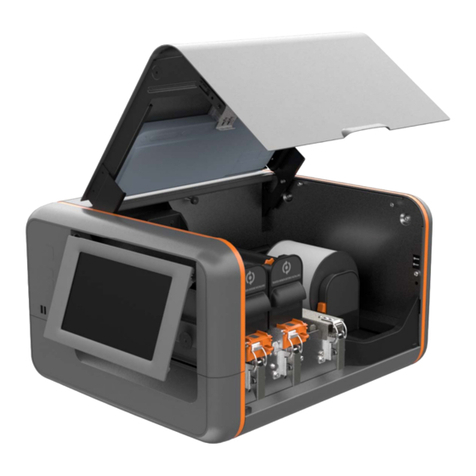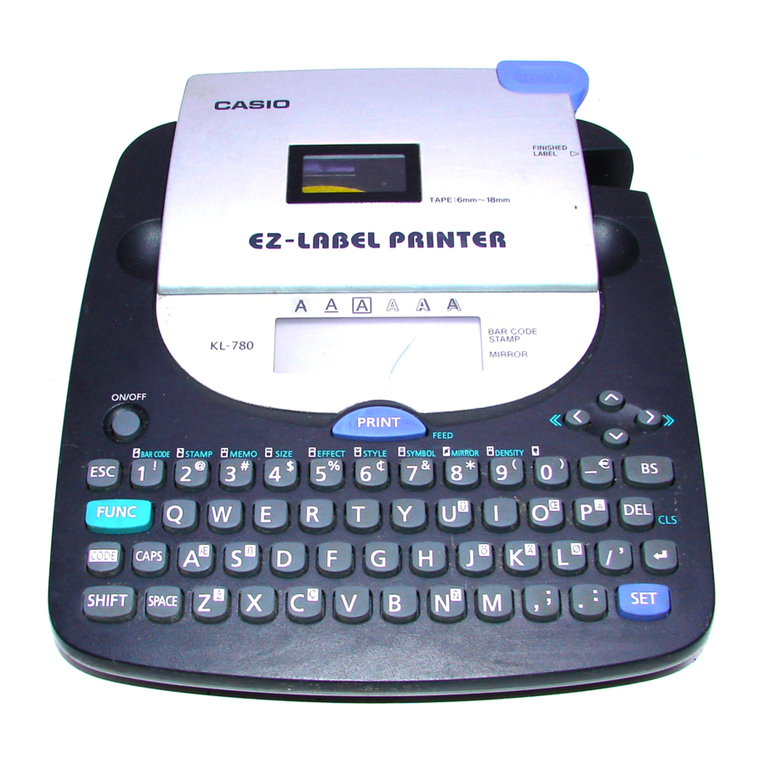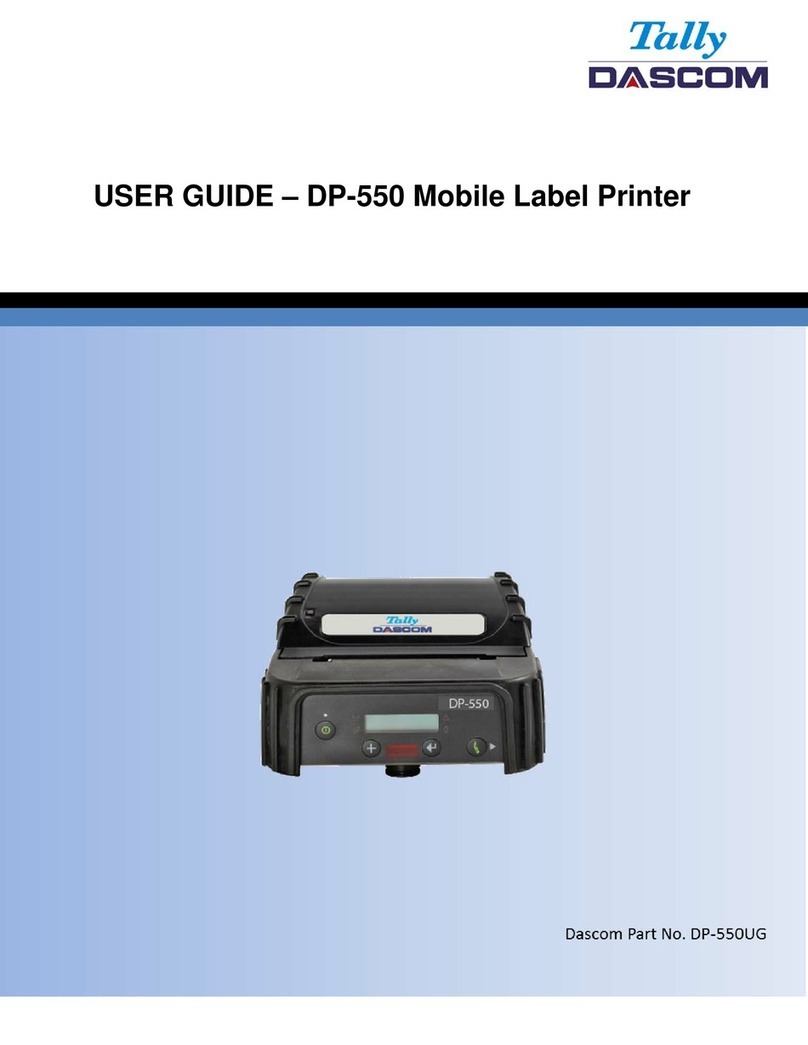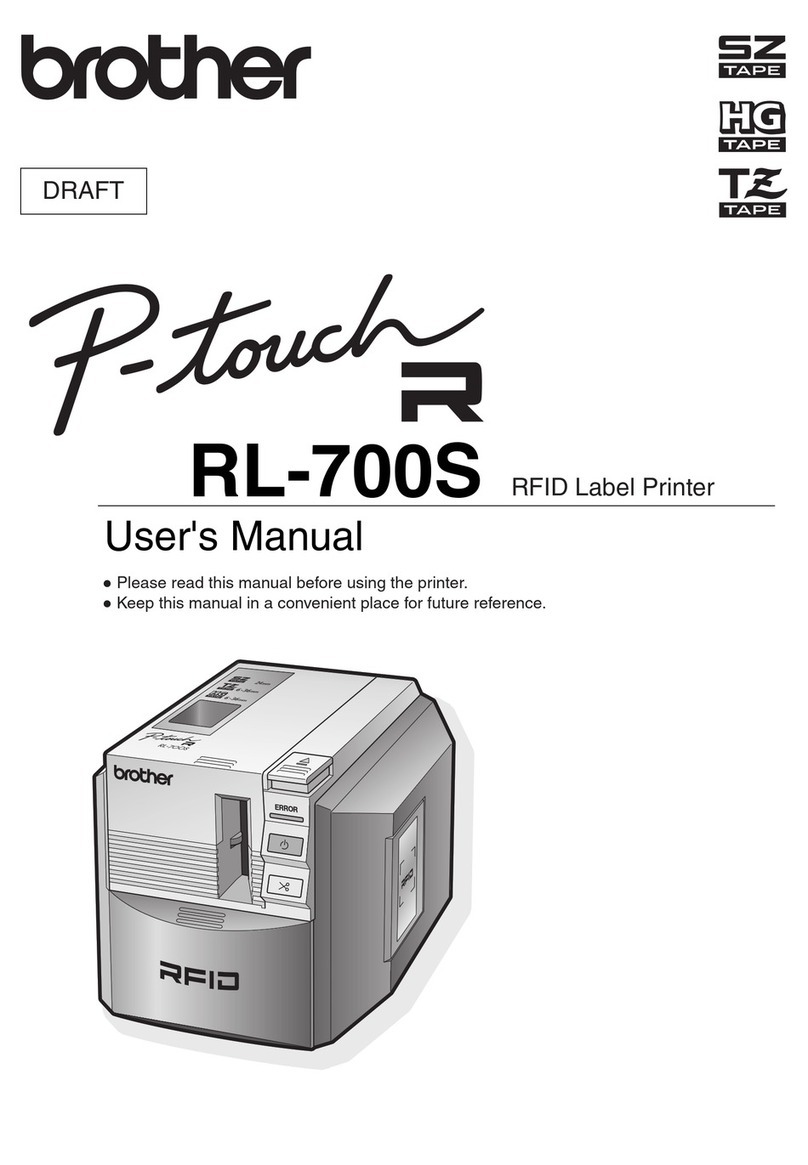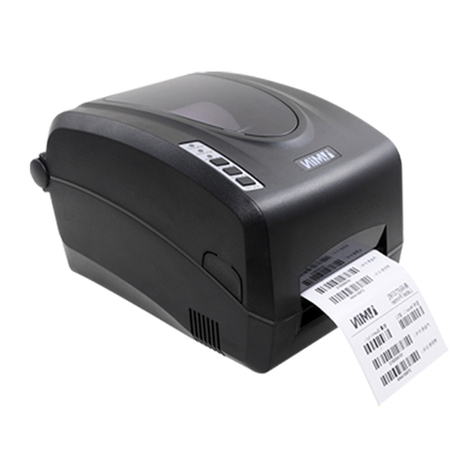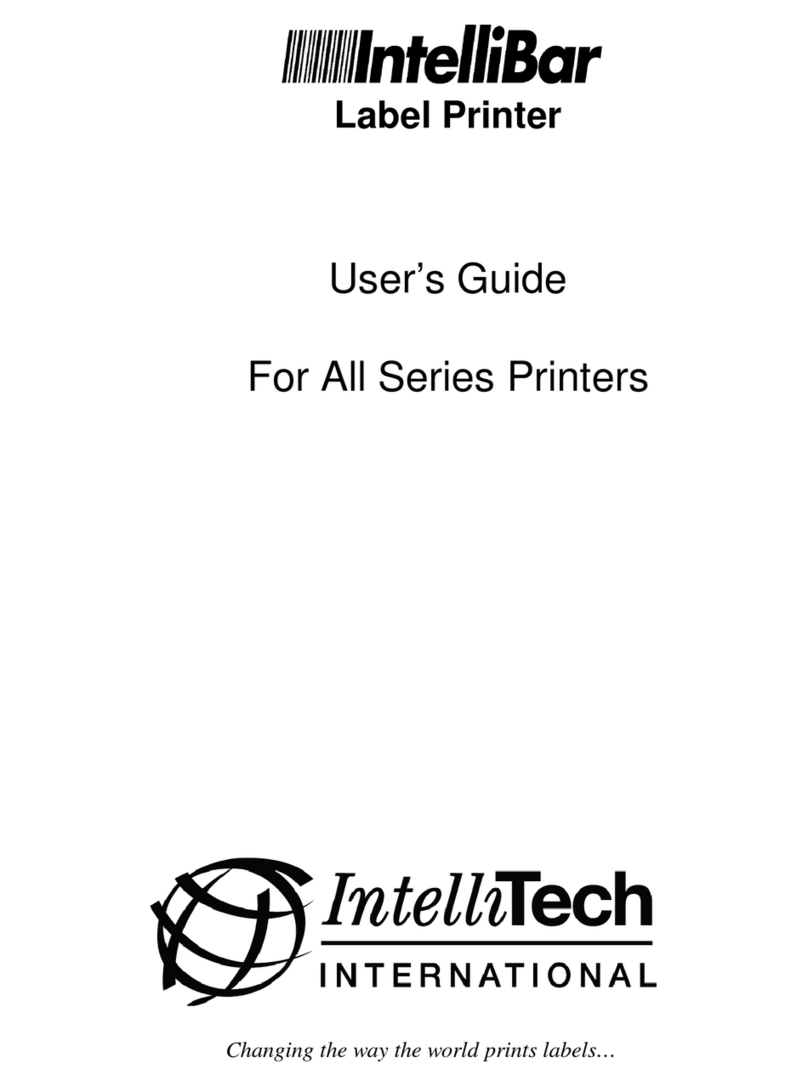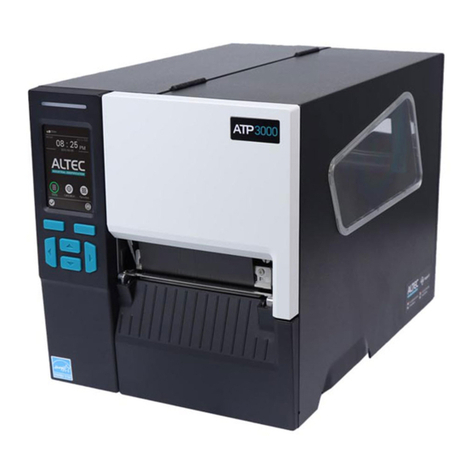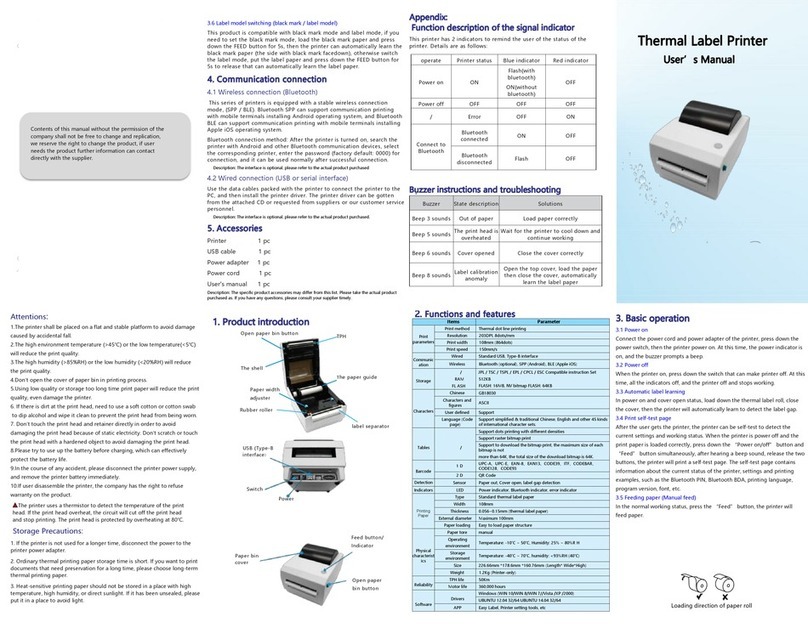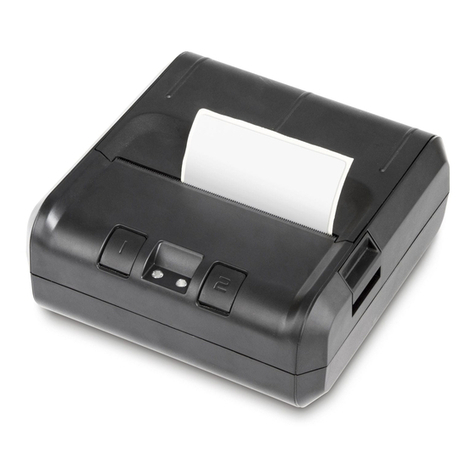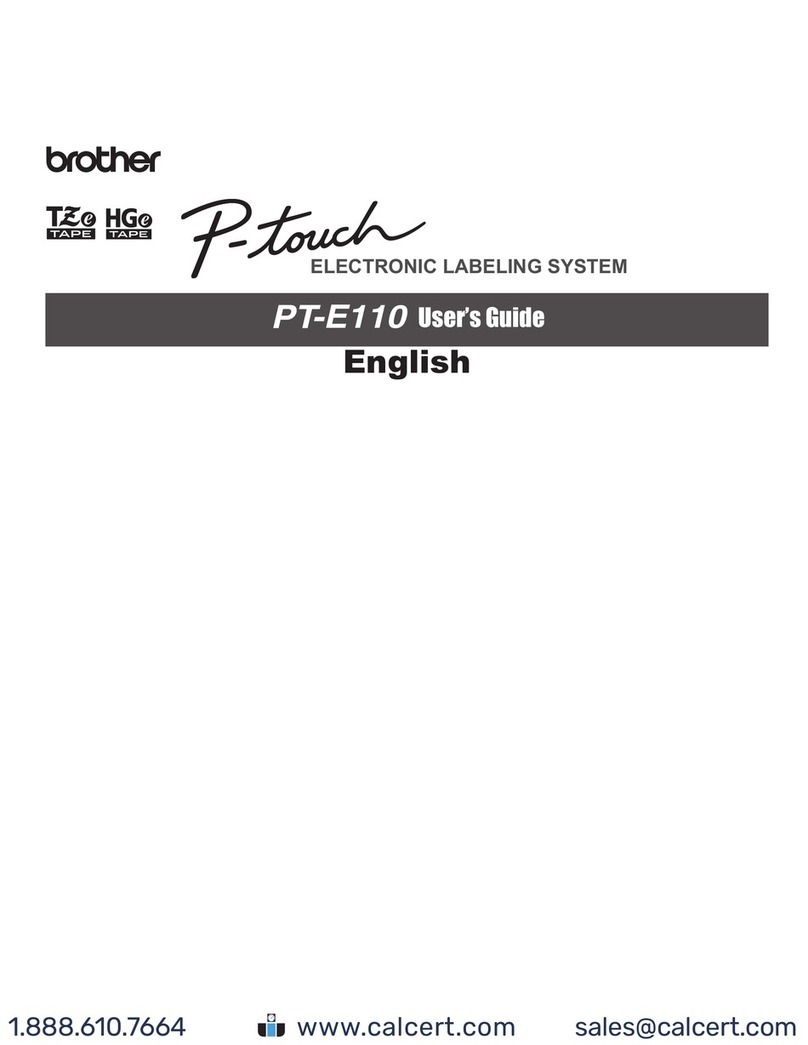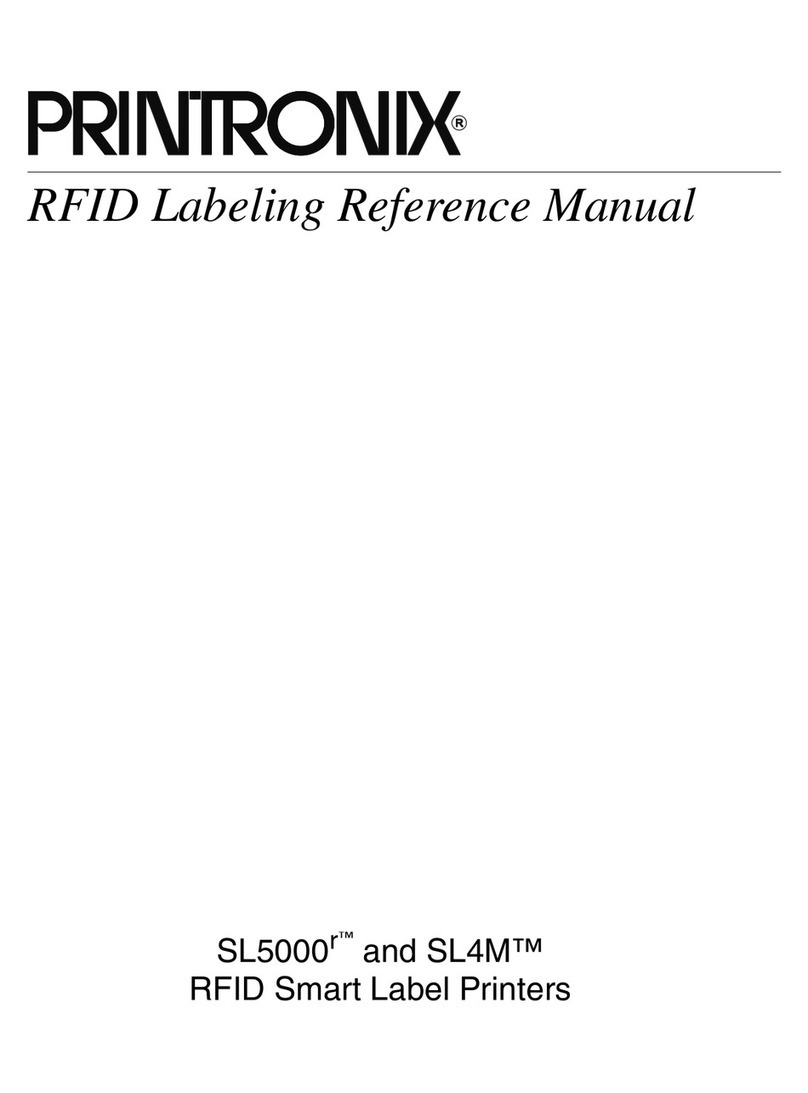Kortho Hot Quickcoder User manual

kortho
Hot Quickcoder
Artikelnummer/Articlenumber: H210 AM
NE

Kortho Hot Quickcoder User Manual 2
bv korthofah
Lageweg 39
Postbus 3040
2220 CA Katwijk
Tel vanuit Nederland/within the Netherlands : 071-40 60 470
Tel Export :+31 71 40 60 480
Tel Installatie en Servicedienst (within the Netherlands) : 071-40 60 450
Telefax : 071-40 32 807
Internet : www.kortho.nl
Deze handleiding is ook verkrijgbaar in de volgende talen:
This manual is also available in the following languages:
H210 AD Duits/german
H210 AF Frans/French
Copyright ©2002 bv korthofah
Alle rechten voorbehouden/ All Rights Reserved
In de EC gedrukt/ Printed in the EC 2002
Door voortdurende innovatie van onze producten is het mogelijk dat de
gebruikte afbeeldingen licht kunnen afwijken van het daadwerkelijke Hot
Quickcodersysteem.
Documentdatum/Document date: 10-3-2003
Handleiding/Manual: HQC Manual H210 AM 05.doc
Aantal Pagina's/ Number of pages: 39
In the light of continuous development and improvement
Korthofah reserves the right to modify the specifications
without prior notice. The figures printed in these manual
may slightly differ from the actual Hot Quickcoder.

Kortho Hot Quickcoder User Manual 3
Inhoudsopgave/Table of contents
Inhoudsopgave/Table of contents............................................................................................. 3
ENGLISH MANUAL/ ENGELSE HANDLEIDING............................................................................ 5
1 GENERAL INSTRUCTIONS BEFORE USE................................................................................. 6
1.1 Liability ........................................................................................................................ 6
1.2 Life Span .................................................................................................................. 6
1.3 Normal use...................................................................................................................6
1.4 Environment ................................................................................................................. 6
1.5 Operational Personnel.................................................................................................... 6
2 GENERAL INTRODUCTION............................................................................................. 7
2.1 The Hot Quickcoder ...................................................................................................... 7
2.2 The Control box............................................................................................................ 7
2.3 The support arm ........................................................................................................... 9
3 SAFE USE .................................................................................................................. 10
3.1 General Safety Measures ............................................................................................. 10
3.2 Explanation of attached stickers ................................................................................... 11
4 INSTALLATION OF THE HOT QUICKCODER .................................................................. 12
4.1 Assembly instructions.................................................................................................. 12
4.2 Connection instructions ............................................................................................... 12
5 PUTTING THE HOT QUICKCODER INTO OPERATION ..................................................... 13
5.1 Setting up the Control box........................................................................................... 13
5.2 Applying the text material ............................................................................................ 14
5.3 Adjusting the position of the HQC................................................................................. 14
6 STARTING UP THE HOT QUICKCODER......................................................................... 15
6.1 Preparation for use...................................................................................................... 15
6.2 Adjustment of the HQC ............................................................................................... 16
7 THE HOT QUICKCODER DURING USE........................................................................... 17
7.1 Changing a text head................................................................................................... 17
7.2 Replacing the Hotroll ................................................................................................... 17
8 DEACTIVATING THE HOT QUICKCODER ...................................................................... 18
8.1 Stopping printing for a short time.................................................................................. 18
8.2 Stopping printing for a longer time ................................................................................ 18
9 MAINTENANCE AND CLEANING .................................................................................. 19
9.1 Maintenance............................................................................................................ 19
9.2 Cleaning.................................................................................................................. 19
APPENDIX A: LIST OF POSSIBLE MALFUNCTIONS.................................................................. 20
Making a Diagnosis of Malfunctions........................................................................................ 20
Locating faults in the HOT QUICKCODER electronics system .................................................... 21
Print Quality Problems........................................................................................................... 24
A. Text head does not move.................................................................................................. 24
B. Text head moves but no printing or only partial printing visible............................................... 24
C. Printing too thick .............................................................................................................. 25

Kortho Hot Quickcoder User Manual
4
D. The text head is not heating up.......................................................................................... 25
Appendix B: Technical data ............................................................................................... 26
Technical data Hot Quickcoder............................................................................................... 26
Technical data Control box for Kortho HQC............................................................................. 26
Appendix C: Connection diagrams ...................................................................................... 28
Control Box Electrical Connection Diagram .............................................................................. 28
Signal device: Checking Wiring Connection.............................................................................. 29
Setting the HQC to the correct mains voltage (110/220V) ........................................................ 29
EC DECLARATION OF AGREEMENT....................................................................................... 30
MULTI LANGUAGE SECTIONBIJLAGE /APPENDIX D: Dimensioned sketches............................ 31
BIJLAGE /APPENDIX D: Dimensioned sketches..................................................................... 32
BIJLAGE / APPENDIX E: Naleverbare Onderdelen / Spare parts ............................................... 35
Artikellijst / Part-list...............................................................................................................37

Kortho Hot Quickcoder User Manual 5
ENGLISH MANUAL/ ENGELSE HANDLEIDING

Kortho Hot Quickcoder User Manual 6
1 GENERAL INSTRUCTIONS BEFORE USE
You should read through this user's manual carefully before putting the Hot Quickcoder into use for
the first time. Follow the order indicated precisely when carrying out any of the actions described in
this manual.
Pay particular attention to all stated warnings!
1.1 Liability
bv korthofah accepts no liability for damage resulting from the improper or uninformed use of the
equipment or caused by maintenance or other work being carried out improperly. They also accept no
liability for the normal wear-and-tear of the product.
1.2 Life Span
The life span of the equipment is ten years with normal use and compliance with the indicated
maintenance periods. The life span can be negatively influenced if original parts are not used for
repairs. All claims to a guarantee or compensation for damages do not apply in such an instance.
The Hot Quickcoder does not contain any harmful substances or materials and can be scrapped or
recycled at the end of its life span.
The Hotrolls should be treated as small chemical waste.
N.B. The above statement is based on the legislation in force as at mid 1995.
1.3 Normal use
Normal use means use under normal conditions i.e. stamping pressure, time and temperature set
within the margins indicated in this User Manual.
1.4 Environment
The environment in which the Hot Quickcoder may be installed must comply with a number of
requirements relating to humidity, temperature and vibrations.
The relative humidity should be between 0 and 85% (non-condensing).
The ambient temperature should be between 5 and 40°C.
The Hot Quickcoder may not be used in any areas having a fire or explosion hazard.
The Hot Quickcoder should be installed in a low vibration location.
1.5 Operational Personnel
Operating personnel are required to be informed by means of instruction as to the functioning of the
equipment. They also need to be informed about the tips and warnings stated in this manual. A
specific preliminary training is not required.
Personnel carrying out repairs and technical maintenance on the equipment should have a secondary
technical education or a comparable technical level of knowledge through practical experience.

Kortho Hot Quickcoder User Manual 7
2 GENERAL INTRODUCTION
The Hot Quickcoder (henceforth HQC) has been developed to apply small texts of one to three lines
(max. line length 25 mm) on a production line. The applications vary from loose products to a
continuous product (e.g. packaging film).
The text can be applied to a stationary or a moving product. The maximum permitted product speed
is 60 m/min. Approx. 250 impressions per minute can be produced.
2.1 The Hot Quickcoder
Figure 1: The Hot Quickcoder The code to be printed is applied to an exchangeable
text head via text characters or blocks. The text head
is inked with a Hotroll which only delivers the inked
(wax-based) at high temperature. The Hotroll is kept
at temperature in the heating ring of the HQC.
2.2 The Control box
A good print quality is achieved with a correct combination of stamping time, stamping pressure,
temperature of the text head and the setting of any counter-pressure plate.
Figure 2: The Control box The stamping time
and temperature are
set with the buttons
on the Control box.
The stamping
pressure is set as
standard to 4 bar.
The impression can
be optimised using a
counter-pressure
plate, if there is one.
(In case film belts)
!WARNING:
After using the HQC, it cannot simply be deactivated. For the correct procedure read section 8
"Deactivating the Hot Quickcoder".
1 Preheating
2 Hotroll
3 Text head
1 Pressure setting
2 OFF button
3 ON button
4 Temperature setting
5 Pulse/time setting
6 Print/delay setting
7 HQC air connection
8 Mains power connection
9 Hot Quickcoder connection
10 Coupling nut
!!! NOTE !!!
The HQC air connection is
a rapid connection as
indicated in figure 2. Other
figures of the Control box
in this manual still show
the old connection.

Kortho Hot Quickcoder User manual 8
The Control box contains a Control Panel with which specific functions can be performed such as
switching the HQC on and off and setting the print parameters. The Control Panel can also be used to
issue a test print signal.
2.2.1 The Control Panel
The Control Panel of the Control box contains the following buttons (see figure 3).
Figure 3: The Control Panel
OFF (1) This button is used to switch off the system. The mains power remains connected to
the system.
ON (2) If it is connected to the mains power, this button is used to switch the system on.
The two green lights indicate that the two low voltages for the electronics and the
magnetic valve are present.
TEST (3) The HQC performs a test print. The system should first be enabled by activating the
START button.
START (4) Once this button is pressed, the HQC is enabled for coding. The green light on the
START button is illuminated when a print signal is received from the signal emitter.
This may be a switch, photocell, relay contact, inductive sensor or 24V DC voltage
pulse. The orange light on the STOP button goes out once the START button has
been pressed.
STOP (5) Once this button is pressed, the HQC stops coding.
The orange light on this button will illuminate to indicate that the system is in
preheating mode. The control will keep the text head at temperature.
F1..F2 (6) As standard these buttons do not have a function. A specific function may be
assigned to them if customer-geared options are incorporated.
HEAD IN (7) If the text head holder is in the outermost position, pressing this button moves the
text head into the HQC.
HEAD OUT (8) This button moves the text head holder to the outermost position. This button should
be pressed to change a text head or text. It can then be used to fix the HQC to the
1 OFF button
2 ON button
3 TEST button
4 START button
5 STOP button
6 Function button F1, F2
7 Text head IN
8 Text head OUT
9 Temperature adjustment
10 Pulse/time adjustment
11 Print/delay adjustment

Kortho Hot Quickcoder User manual 9
material to be coded. The text head (holder) is moved back into the HQC by pressing
HEAD IN (7).
TEMP (9) For adjusting the temperature of the text head between 80°C and 160°C. When the
red light is illuminated continuously once the system has been started up, the text
head is heating up. When the text head has reached the desired temperature, the red
light will flash to indicate that the text head is being kept at temperature. The text
head is now kept at the set temperature.
PULSE/TIME (10) For adjusting the desired stamping time of the text head. This time can be set
between 10 and 50 milliseconds. The orange PULSE/TIME light emits a light signal
during the stamping time.
PRINTDELAY (11) The green light on this dial is illuminated when a print signal is emitted by the
signal emitter.
The print delay can be deactivated by connecting jumper J16 on the PCB in the lid of he Control box.
See Appendix C.
2.2.1 Connections on the Control box
The Control box (see figure 2) has an HQC air connection (7), mains power connection (8), HQC
connection (9) and a swivel acting as a feed for a signal emitter (10).
2.3 The support arm
Figure 4: The support arm
The support arm is used to position the HQC and any counter-pressure plate in relation to the product
to be printed.
The support arm is suitable for moving the HQC to any position.
The exceptionally short stamping time makes it possible to print directly onto a moving product
without further modifications.
1 Support arm
2 counter-pressure plate

Kortho Hot Quickcoder User manual 10
3 SAFE USE
The HQC is a durable and reliable piece of coding equipment. In order to work with it safely, it is
important that the precautions indicated in this manual are strictly followed.
3.1 General Safety Measures
Figure 5 Disconnecting the Hot Quickcoderr from the mains
The operation of the HQC is based on:
• movement (of the text head);
• pressure (built up between the text head and the counter-pressure plate or the product);
• heating (of the text head and the Hotroll).
There are potential dangers hidden in the above with regard to the Hot Quickcoder. Safety measures
are given in this manual for situations which are potentially dangerous. The following is an overview
of the most important safety measures.
SAFETY MEASURES
!Before operating the Hot Quickcoder, disconnect it from the mains by removing the mains cord
from the control box (see Figure 5).
!After using the HQC, it cannot simply be deactivated. For the correct procedure read section 8
"Deactivating the HQC".
!
Take care not to touch the hot text head of Hotroll (for example when inserting or replacing a hot
roll). Allow the printer to cool down for approximately fifteen minutes before carrying out work
on the HQC.
!Never insert your fingers between the text head and the counter-pressure plate or the product.

Kortho Hot Quickcoder User manual 11
General danger Danger due to
Danger due to high temperature
hight voltageparts
Coding unit remains Maximum adjustable
Voltage
hot for a while pressure
requirements
after use
3.2 Explanation of attached stickers
Figure 6: Symbols
Various warning symbols
are attached to the HQC.
Here is an explanation of
the symbols on the
stickers.

Kortho Hot Quickcoder User manual 12
4 INSTALLATION OF THE HOT QUICKCODER
4.1 Assembly instructions
Figure 7a: options for coding products Figure 7b: options for coding lengths of film
See Figure 7 for a summary of the options. During assembly ensure that sufficient space is left
around the coder to replace the Hotroll and to change the text head. If necessary, set up the coder so
that it revolves. The dimensional sketches are included in Appendix D.
1. Mark the desired position of the holes for assembling the support (pitch is 70 mm). When
determining the position, take account of the fact that the text head (in the marked position)
should ultimately be located approx. 2-3 mm from the product surface to be printed (figure
7b).
2. Drill the fixing holes for the support (diameter 6.5 mm of M6).
3. Assemble the support with M6 bolts (x2).
4. Fix the coder to the support.
5. Mark the desired position of the holes for assembling the Control box (pitch is 70 mm).
6. Drill the fixing holes for the Control box (diameter 4.5 mm of M4).
7. Assemble the Control box with M4 bolts and/or nuts (x4).
4.2 Connection instructions
1. Disconnect the printer from the voltage by removing the mains cable from the Control box.
2. Open the Control box.
3. Check that the desired power supply is set correctly. (see appendix C).
4. Connect a sensor to supply the print command. The connection points and settings of the
switch and jumpers are given in appendix C.
5. Connect the power and control cable to the coding part.
6. Connect the Control box to the compressed air supply (setting ± 4 bar) via the reducing
valve.
7.Connect the HQC to a grounded connection.
!WARNINGS:
Before opening the control of the Hot Quickcoder, it should forst be disconnected from the power. This
is done by removing the mains cable from the Control box (see figure 5).
Only an GROUNDED cable may be used for connecting the equipment!

Kortho Hot Quickcoder User manual 13
5 PUTTING THE HOT QUICKCODER INTO OPERATION
The correct operation of the HQC is determined by the setting of the stamping time, stamping
pressure and temperature and the distance of the HQC from the surface to be printed.
The description below assumes that:
• The HQC has been installed so that it is easily accessible (see section 4).
• The supply of products is interrupted.
• The HQC is switched on.
5.1 Setting up the Control box
Figure 8: Setting up the Control box
The HQC can be switched On and Off with the ON (2) and OFF (1) buttons. The dials (9), (10) and
(11) are used respectively to adjust the temperature of the text head, the stamping duration and the
printing position on the product.
Switch on the system by pressing the ON button (2). The operating temperature of the HQC is
around 135° C in most instances. This means that a heating up time of 15 minutes (position 8) after
switching on the HQC should be taken into account. The system automatically switches to the
warming-up position after the ON button has been pressed. The red light next to the TEMP turn knob
(9) will be lit continuously.
No prints are made during the warming-up phase if a print signal is received. The HQC remains in the
STOP position during the warming-up phase and the orange light on the STOP button (5) is lit.
The warming-up phase is completed when the red light on the TEMP turn knob (9) blinks at a steady
rate.
After the warming-up phase, a testprint can be made by pressing the TEST button (3). To make a
testprint, however, the system needs to first be released by pressing the START button (4).
Depending on the quality of the testprint, the HQC may need to be adjusted. Otherwise, simply press
the START button (4) to prepare the HQC for production.
An explanatory overview of the buttons and turn knobs on the control box control panel is given in
Chapter 2.
1 OFF button
2 ON button
3 TEST button
4 START button
5 STOP button
6 Function button F1, F2
7 Text head IN
8 Text head OUT
9 Temperature adjustment
10 Pulse/time adjustment
11 Print delay adjustment
12 Reducing valve
13 HQC air connection
14 Mains connection
15 HQC connection
16 Coupling nut

Kortho Hot Quickcoder User manual
14
5.2 Applying the text material
Figure 9: The text head
The text head has a printing area of 17 x 20 mm or 17 x 25 mm. The printing area has a specially
shaped profile. The text characters have the same profile on the reverse. The text characters are
applied to the text head with a simple printing movement.
The 'blank space' in the text characters on the same "line" should be completely filled with space
characters.
5.3 Adjusting the position of the HQC
Figure 10: Distance to the product
The HQC should be positioned such that the text head (5) is located in the position shown 2 to 3 mm
from the surface to be coded.
A fine adjustment is available as an option. This can be used to adjust the distance to the product
simply and accurately.
1 Crossing clamp
2 Adjusting ring
3 Hinge joint
4 Text head
5 Product
Activate the "HEAD-OUT" button (8) on the Control Panel (see section 5.1). This will fix the text head
holder in the outermost position.
Position the text head in the older (see section 6.1).
Position the Hot Quickcoder so that the text head is located 2 to 3 mm from the surface to be coded.
Lock the crossing clamp (1).
Place the adjusting ring (2) against the underside of the crossing clamp.
Adjust the hinge joint (3) so that the product will be coded evenly.
If necessary, reset the height.
Activate the "HEAD-IN" button (7) on the Control Panel (see section 5.1). The text head moves in.

Kortho Hot Quickcoder User manual 15
6 STARTING UP THE HOT QUICKCODER
6.1 Preparation for use
Figure 11: Preparation for use
1. Take the text head and prepare it for use by applying the desired text material (see section
5.2).
2. Connect the system to the Control box by pressing the ON button.
3. Activate the HEAD-OUT button on the Control Panel (see section 5.1). This fixes the text
head in the outermost position.
4. Place the text head in the text head holder.
5. Remove the handle (4) by twisting it out of the text head.
6. Place a Hotroll in the coding part (2) of the HQC; the cartridge must be pushed in until it
clicks.
7. Activate the HEAD-OUT button on the Control box (see section 5.1).
8. Set the temperature adjustment on the Control box (section 5) to position 8 which sets the
temperature to ± 135°C.
9. Take account of 15 to 20 minutes' heating up time.
10. Activate the START button on the Control box (see section 5.1).
11. Activate the supply of products.
Adjust the print quality further in accordance with the instructions in section 6.2.
13. Place a Hotroll in the preheating chamber (1). This heats up a new Hotroll during production
so as to avoid undesirable loss of production.
!WARNINGS:
Failure to observe the requisite heating up time of ±15 minutes leads to irrevocable damage to the
text material and the Hotroll!
Failure to remove the handle from the text head can damage the HQC
1 Preheating chamber
2 Coding part
3 Text head holder
4 Handle

Kortho Hot Quickcoder User manual 16
6.2 Adjustment of the HQC
Figure 12: Adjustment of the HQC
A correct adjustment of the HQC is achieved by the setting of the stamping pressure, temperature
and stamping time.
The stamping pressure is adjusted with the reducing valve. This is mounted on the left-hand side of
the Control box (1). The temperature is set with the TEMP dial (2). The stamping time is set with the
PULSE/TIME dial (3).
Furthermore, the PRINT/DELAY dial (4) can be used to set a delay between the sensor signal and the
actual coding job through the Control box to the HQC.
STEPS:
1. Set the stamping pressure to ± 4 bar.
2. Set the temperature to position 8 (± 135°C).
3. Set the stamping time such that an optimum print is generated. If necessary, the print quality
can be improved by slightly increasing the pressure and/or temperature.
If the print does not result in a completely even image, the position of the HQC probably needs to be
adjusted (see section 5.3).
!WARNING:
Too high a temperature setting can reduce the service life of the Hotroll.
Too high an air pressure setting can reduce the service life of the Hot Quickcoder.
The standard optimum setting in most cases is an air pressure of ± 4 bar and a temperature of ± 135°C
(position 8). Adjust the setting so that both the temperature and the air pressure are around the standard
setting.
1 Reducing valve
2 Temperature setting
3 Pulse/Time setting
4 Print/Delay setting

Kortho Hot Quickcoder User manual 17
7 THE HOT QUICKCODER DURING USE
7.1 Changing a text head
Texts can be changed particularly quickly by changing the text head.
1. Stop the supply of products.
2. Remove the product under (or in front of) the HQC or turn the HQC in its entirety away from
the belt.
3. Activate the HEAD-OUT button on the Control Panel.
4. Twist the handle into the text head.
5. Use the handle to extract the text head from the text head holder.
6. Use the handle to position the (new) text head in the text head holder (check for blockages).
7. Twist the handle out of the text head.
8. Activate the HEAD-IN button on the Control Panel. This moves the text head back into
neutral position.
9 Allow the new text head to reach operating temperature (approx. 2 minutes).
10. Replace the product under (or in front of) the HQC or turn the HQC in its entirety back
towards the belt.
11. Start the supply of products.
7.2 Replacing the Hotroll
If the print becomes less legible, the Hotroll should be replaced. Replace the used roll with a roll
which has already been brought up to the correct temperature in the preheating chamber of the HQC.
1. Activate the STOP button on the Control Panel.
2. Stop the supply of products;
3. Activate the HEAD-OUT button on the Control Panel;
4. Extract the used Hotroll from the coding part of the HQC;
5. Remove the new Hotroll from the preheating chamber;
6. Slide the new Hotroll into the coding part of the HQC; the cartridge must be pushed in until it
clicks;
7. Replace the removed product under (or in front of) the HQC;
8. Activate the HEAD-IN button on the Control Panel;
9. Activate the START button on the Control Panel.
10. Restart the supply of products;
11. Place a new Hotroll in the preheating chamber.
!WARNINGS:
Failure to follow the rules below when replacing a Hotroll leads to damage to the text material, the Hotroll
and the HQC itself!
The temperature of the text head is approximately 120°C!
!WARNINGS:
If the text head is removed during normal operation, it's temperature is approximately 120°C!
Failure to remove the handle from the text ead can damage the HQC.

Kortho Hot Quickcoder User manual 18
8 DEACTIVATING THE HOT QUICKCODER
8.1 Stopping printing for a short time
If the HQC is deactivated for a short time (during a break), the STOP button on the Control Panel
should be pressed. The thermostat part of the Control box continues to operate normally. When
production is resumed, the START button on the Control Panel must be pressed and the QC is ready
for immediate use.
8.2 Stopping printing for a longer time
If the HQC is deactivated for a longer time (several days):
1. Stop the supply of products;
2. Activate the HEAD-OUT button on the Control Panel;
3. Remove the Hotroll from the coding part of the HQC;
4. Activate the HEAD-IN button on the Control Panel. This moves the text head back into
neutral position;
5. Now switch off the HQC using the OFF button on the Control Panel;
6. If necessary, remove the air pressure from the system;
7. If desired, resume the supply of products;
When the system is started up again, you should take account of the requisite heating up time of 15
to 20 minutes (see section 5.1).
!WARNING:
Failure to observe the requisite heating up time of ~15 minutes leads to irrevocable damage to the
text material and the Hotroll!

Kortho Hot Quickcoder User manual 19
9 MAINTENANCE AND CLEANING
9.1 Maintenance
It is recommended to have the HQC system checked and/or reconditioned periodically.
The recommended frequency is once every two years depending on the degree of use of the HQC.
No special tools are needed for carrying out maintenance work.
9.2 Cleaning
The HQC can best be cleaned using a dry brush.
The control box can best be cleaned using a cleaner that will not damage the plastic.
!WARNINGS:
Whenever the HQC is cleaned it should first be completely disconnected from the mains power
by
removing the mains plug from the Control box (see figure 5)
Under no circumstances must the HQC be cleaned with water.

Kortho Hot Quickcoder User manual 20
APPENDIX A: LIST OF POSSIBLE MALFUNCTIONS
Making a Diagnosis of Malfunctions
A diagnosis can be made at the electrical level using the lights on the Control Panel of the Control
box.
The lights on the control box control panel indicate the following:
ON, green, left: Light illuminated: 12V DC power supply present for electronics.
ON, green, right: Light illuminated: 24V DC power supply present for
magnetic valve coil and print signal sensor.
START, green: Light illuminated: the sensor is activated.
STOP, orange: Light illuminated: the HQC is in preheating mode.
The lights to the upper left of the turn knobs indicate the following:
TEMP, red:
PULSE/TIME, yellow:
PRINT/DELAY, green:
!WARNING:
If you decide to open the Control box or the HQC, the entire installation should first be disconnected
from the power! This is done by removing the mains cable from the Control box (see figure 5).
Light is lit: the heating element is receiving voltage.
Light burns continuously: the heating element is preheating the printhead.
Light is blinking at a steady rate: the set temperature of the sensor has been reached.
Light is lit: the magnetic valve is being powered.
Light is lit: during the delay time. The light is also lit up whenever the
PRINT/DELAY is not switched on.
This manual suits for next models
1
Table of contents


